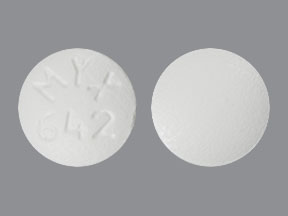
Tamoxifen Coupons & Savings Card – Discount Prices from $13.68
Generic for: Soltamox
My prescription
Edit
10MG, Tamoxifen (30 Tablets)
Select pharmacy

CVS
$20.73
COUPON PRICE
Walgreens
$13.68
COUPON PRICE
Albertsons
$16.69
COUPON PRICE
Walmart
$18.64
COUPON PRICEFree Tamoxifen Savings Card

Walgreens
$13.68
Show this coupon to your pharmacist
ID
LH18F36FD5
PCN
CHIPPO
BIN
019876
GRP
LHX
This coupon is not insurance
Related estrogen antagonists prescriptions
More prescriptions for breast cancer
Related estrogen antagonists prescriptions
More prescriptions for breast cancer
Price history for Soltamox (brand) & Tamoxifen (generic)
30 Tablets, 10MG
Average retail price for Soltamox
Average retail price for Tamoxifen
Average SaveHealth price for Tamoxifen
Our price history data is based on aggregated prescription data collected from participating pharmacies in America. Our prescription data updates daily to reflect the latest price changes. If you notice a missing data point, it means there wasn't sufficient data available to generate a monetary value for that date.
We analyzed Tamoxifen prices for (10MG, 30 Tablets) over the last 12 months. The average retail price was $56.70, while the average price using the SaveHealth discount card was $36.14. That's a savings of approximately 36.26% when using our Tamoxifen coupon.
Compared to the generic version, Soltamox had an average price of $820.43 over the same time period. With the SaveHealth savings card, Tamoxifen is 95.59% cheaper on average than Soltamox.
*Retail prices are based on pharmacy claims data, and may not be accurate when we don't have enough claims.
Tamoxifen dosage forms
Dosage Quantity Price from Per unit 10MG 30 Tablets $13.68 $0.46 10MG 60 Tablets $23.46 $0.39 10MG 90 Tablets $26.19 $0.29 20MG 30 Tablets $17.55 $0.58 20MG 60 Tablets $26.10 $0.43 20MG 90 Tablets $30.51 $0.34
| Dosage | Quantity | Price from | Per unit |
|---|---|---|---|
| 10MG | 30 Tablets | $13.68 | $0.46 |
| 10MG | 60 Tablets | $23.46 | $0.39 |
| 10MG | 90 Tablets | $26.19 | $0.29 |
| 20MG | 30 Tablets | $17.55 | $0.58 |
| 20MG | 60 Tablets | $26.10 | $0.43 |
| 20MG | 90 Tablets | $30.51 | $0.34 |
Tamoxifen Warnings
Tamoxifen is a medication with several important safety considerations that should be reviewed with your healthcare provider. This information is crucial to ensuring the safe use of the drug and understanding the potential risks involved.
Serious Risks: Although rare, tamoxifen can cause severe and potentially fatal conditions such as strokes, blood clots in the lungs or legs, and uterine cancer. If you are using tamoxifen to lower the risk of breast cancer or for ductal carcinoma in situ (DCIS), discuss the potential benefits and risks with your doctor. For those treating breast cancer, the benefits generally outweigh the risks.
Blood Clots: Tamoxifen increases the risk of blood clots, including deep vein thrombosis, pulmonary embolism, and stroke. This risk is heightened if you are also undergoing chemotherapy. Seek immediate medical attention if you experience symptoms such as leg pain or swelling, difficulty breathing, or chest pain.
Uterine Changes and Cancer Risk: Use of tamoxifen can lead to changes in the uterus, including the development of ovarian cysts, uterine fibroids, and uterine cancer, particularly with long-term use. Regular gynecological exams are recommended. Report any unusual vaginal bleeding, discharge, or pelvic pain to your healthcare provider.
Eye and Liver Health: Tamoxifen may cause cataracts and other eye issues. Notify your doctor of any changes in vision. It can also affect liver function, sometimes leading to serious conditions. Regular liver function tests will be conducted. Symptoms like yellowing of the skin or eyes, loss of appetite, or fatigue should be reported immediately.
Calcium and Platelet Levels: In some cases, tamoxifen can increase calcium levels in the blood, especially in metastatic breast cancer patients. This requires regular monitoring. Symptoms include nausea and muscle weakness. Additionally, there's a risk of low platelet count, which increases bleeding risk. Inform your healthcare team if you notice unexplained bruising or bleeding.
Pregnancy Warning: Tamoxifen can severely harm an unborn baby. Women who can become pregnant should use non-hormonal birth control during treatment and for two months after the last dose. Contact your doctor immediately if you become pregnant while on tamoxifen.
Contraindications: Tamoxifen should not be used by women at high risk of breast cancer who are taking warfarin or have a history of blood clots. If any of these apply to you, consult your healthcare provider.
Always consult your healthcare professional for a thorough understanding of the use of tamoxifen and its associated risks and benefits.
Tamoxifen Side Effects
Common side effects:
- Hot flashes
- Nausea
- Leg cramps
- Muscle aches
- Headaches
- Hair thinning
- Decrease in sexual interest or ability
- Skin changes (including numbness or tingling)
Less common but important to monitor:
- Vaginal discharge
- Irregular or no monthly bleeding
- Vaginal bleeding
- Weight loss
- Swelling in the arms and legs
- Fatigue
- Headaches
- Coughs
- Mood changes
- Muscle, joint, or bone pain
- Weakness
- Tiredness
- Breast pain
Serious side effects:
- Vision changes
- Eye pain
- Easy bruising or bleeding
- Significant mood changes
- Swelling of the ankles or feet
- Unusual tiredness
- Signs of infection
- Indications of liver disease (persistent nausea or vomiting, loss of appetite, abdominal pain, yellowing of the eyes or skin, dark urine)
- Symptoms of blood clots (pain or swelling in the limbs, trouble breathing, chest pain, fast heartbeat)
- Signs of a stroke (severe headaches, sudden confusion, weakness on one side of the body, trouble speaking or walking)
- Severe allergic reaction (rash, itching or swelling especially of the face, tongue, or throat, severe dizziness, trouble breathing)
Tamoxifen Interactions
Interactions with high risk of serious adverse effects and should be avoided:
- Acenocoumarol
- Bepridil
- Cisapride
- Dronedarone
- Fluconazole
- Ketoconazole
- Mesoridazine
- Nelfinavir
- Phenprocoumon
- Pimozide
- Piperaquine
- Posaconazole
- Saquinavir
- Sparfloxacin
- Terfenadine
- Thioridazine
- Warfarin
- Ziprasidone
Interactions with moderate risk that may require dose adjustment, closer monitoring, or timing changes:
- Abametapir
- Amiodarone
- Carbamazepine
- Fluoxetine
- Paroxetine
- Ribociclib
- Rifampin
- St. John's Wort
- Anastrozole
- Estrogens
- Letrozole
- Hormonal forms of birth control
- Butalbital
- Cimetidine
- Mitotane
- Secobarbital
- SSRI antidepressants
- Anticonvulsants
